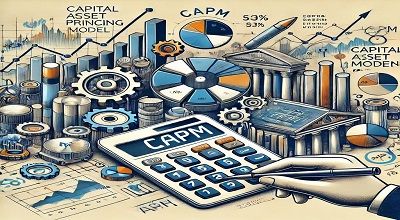CAPM
The Capital Asset Pricing Model (CAPM) is a financial model used to determine the expected return on an investment based on its risk. Developed by William Sharpe, John Lintner, and Jan Mossin in the 1960s. CAPM is widely used in finance for pricing risky securities and generating expected returns for assets.
The core concept of CAPM is that investors should be compensated for the time value of money and the level of systematic risk (market risk) associated with an investment. The model considers the following key components:
- Risk-Free Rate: The return on an investment that is considered to have no risk, typically represented by the yield on government bonds.
- Market Risk Premium: The additional return that investors demand for bearing the risk of investing in the overall market rather than a risk-free asset. It reflects the average return of the market above the risk-free rate.
- Beta (β): Beta measures the sensitivity of an asset’s returns to changes in market returns. It quantifies the asset’s systematic risk relative to the market. A beta of 1 indicates that the asset’s returns align with the market. While a beta greater than 1 suggests higher volatility. A beta less than 1 indicates lower volatility compared to the market.
formula for calculating
The formula for calculating the expected return using CAPM is:
E(Ri)=Rf+βi×(E(Rm)−Rf)
Where:

CAPM assumes that investors are rational and risk-averse, seeking to maximize returns while minimizing risk. It also assumes that markets are efficient, meaning that asset prices reflect all available information.
Despite its widespread use, CAPM has faced criticism and empirical challenges. Such as its reliance on market efficiency assumptions and the simplicity of its risk measurement. However, it remains a foundational concept in finance and serves as a building block for more advanced asset pricing models.
